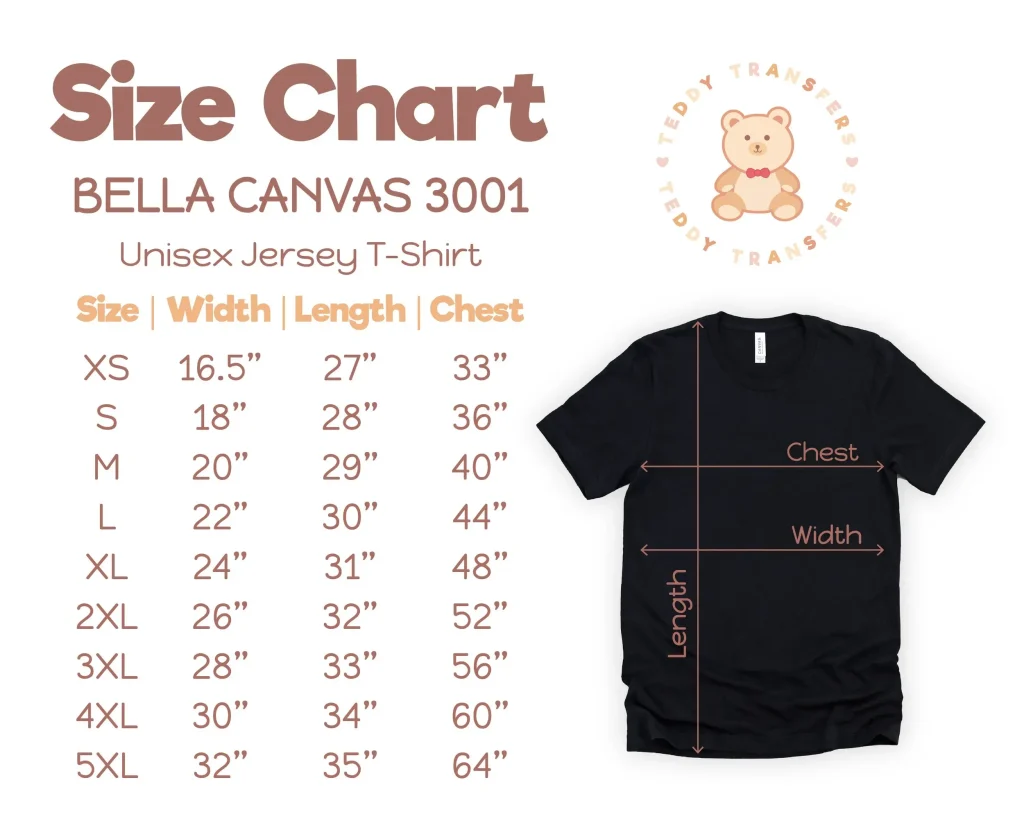DTF Transfer by Size is a crucial aspect of the Direct-to-Film printing process that can significantly enhance the quality and appeal of your custom print designs. As the demand for personalized prints grows across various sectors, understanding how to size your DTF custom prints effectively becomes paramount. The benefits of DTF transfer extend beyond just aesthetics; they encompass improved client satisfaction and better product functionality. This innovative DTF printing technology allows for vibrant designs tailored to meet specific sizing needs, ensuring that your prints stand out. In this post, we will delve deeper into how selecting the right size for your DTF transfers can impact your overall printing projects and brand perception.
When we talk about DTF Transfer by Size, we are essentially discussing the significance of adjusting print dimensions to match specific requirements in the Direct-to-Film printing industry. This approach, also known as custom print sizing, focuses on optimizing the scale of designs to enhance visual representation across various textiles. The unique advantages of DTF transfer printing allow for tailored prints that cater specifically to diverse product shapes and sizes. By understanding how to measure and implement the right dimensions in your DTF custom prints, businesses can elevate their branding efforts while providing unparalleled customer satisfaction. Throughout this article, we will explore the importance of sizing in DTF printing technology and how it contributes to achieving standout products.
Understanding DTF Transfer Printing Technology
Direct-to-Film (DTF) printing technology has revolutionized the way custom prints are created and applied to textiles. This modern method involves printing designs onto a specially coated film, which are then heat-pressed onto the desired fabric. Unlike traditional screen printing, DTF allows for full-color designs with intricate details, resulting in captivating visuals that stand out. The versatility of DTF technology permits applications on a variety of fabrics, including cotton, polyester, and blends, making it ideal for a wide range of products like apparel, accessories, and promotional items.
As industries seek more cost-effective and high-quality printing solutions, DTF printing has emerged as a frontrunner. It provides numerous advantages such as minimal setup time, the ability to print small batches, and lower material waste. Additionally, advancements in DTF ink formulations have led to improved durability and washability, ensuring that printed designs remain vibrant over multiple washes without fading. This makes DTF printing an exceptional choice for both small businesses and large-scale operations aiming to provide custom print solutions.
The Role of Size in DTF Transfers
The role of size in DTF transfers cannot be overstated as it directly influences the aesthetic and functional aspects of the printed product. Opting for the right dimensions ensures that designs are neither too dominant nor too subtle on the fabric. For instance, a large printed logo on a small item like a pocket tee may overshadow the garment, while a tiny design on a large canvas may go unnoticed. Finding the right balance significantly enhances the overall appeal and functionality of products, which is essential in attracting customer attention.
Moreover, custom print sizing is crucial in ensuring that designs are appropriate for their intended use. For example, athletic wear often necessitates larger prints for visibility during workouts, whereas more subtle designs might be suitable for formal apparel. Thus, understanding the relationship between size and the context helps create products that not only meet design expectations but also satisfy practical requirements. The comprehensive approach to sizing within DTF printing highlights why it is imperative for businesses to consider how their prints will interact with the garment and the end-user.
Techniques for Optimal DTF Custom Print Sizing
Selecting the optimal size for DTF custom prints requires several considerations, primarily focusing on fabric type, intended use, and design complexity. Different fabrics can drastically alter the perceived size of a design; for instance, a more textured fabric might make a print appear smaller than it actually is. Therefore, it is essential to test print sizes on the actual material to ensure the final product maintains the visual impact intended by the designer.
Along with fabric characteristics, the intended application of the custom print plays a significant role in determining size. For instance, designs intended for sports uniforms may require larger and bolder prints that resonate with the active and dynamic nature of the wearers. Similarly, intricate designs may be better suited to larger prints, allowing all details to be properly displayed and appreciated. Utilizing these techniques can enhance product appearance and effectiveness, ensuring that the DTF transfer process produces high-quality results.
Advantages of Customized DTF Transfers
One of the most compelling advantages of customized DTF transfers is their inherent versatility. Unlike traditional printing methods, DTF transfers can be applied to a wide variety of substrates, making them suitable for an expansive range of textile products. From casual everyday wear to high-performance athletic gear, DTF printing technology provides the flexibility needed to create eye-catching, custom designs on different fabric types. This adaptability caters to an intricate demand for personalization in today’s market.
Furthermore, DTF printing technology excels in detail retention and color vibrancy compared to other printing methods. The ability to maintain high-quality outputs with intricate designs allows for greater creativity and allows businesses to offer unique products that captivate consumers. As businesses increasingly prioritize customization and differentiation, the benefits of DTF transfers are becoming more pronounced, leading to not only enhanced product offerings but also greater customer satisfaction.
Navigating Challenges in DTF Printing
As promising as DTF printing technology may be, it comes with its set of challenges that businesses need to address. One significant hurdle is the upfront investment in quality machinery and materials. To ensure that prints meet the high standards expected in the market, businesses may need to invest in advanced DTF printers, specialized inks, and high-quality transfer films. This initial expense can be daunting but is necessary for producing durable and vibrant prints that stand the test of time.
Additionally, the need for skilled personnel in DTF printing cannot be overlooked. Understanding the nuances of the printing process, from setup to operation and maintenance, requires adequate training and experience. Investing in comprehensive training programs for staff involved in the DTF printing process enhances product quality and minimizes errors during production, ultimately leading to greater client satisfaction and efficient operations.
Future Trends in DTF Printing Technology
The future of DTF printing technology looks promising, especially as customization continues to surge in popularity across various industries. As consumer preferences shift towards more personalized products, businesses are finding innovative ways to enhance their offerings through advanced technologies. DTF printing stands at the forefront of this trend, harnessing the ability to produce unique, tailored designs that resonate with individual users.
Moreover, as technology continues to advance, we can anticipate improvements in DTF printing methods, including efficiency and quality enhancements. Innovations in ink formulations and film technology may lead to even better durability, color depth, and transfer qualities, which will further empower businesses to provide exceptional products. This continual evolution makes DTF printing not just a trend but a lasting solution for businesses adapting to a highly competitive marketplace.
Frequently Asked Questions
What is DTF Transfer By Size and why is it important?
DTF Transfer By Size refers to the process of adjusting the size of Direct-to-Film (DTF) transfers to suit specific items, ensuring they are visually appealing and proportionate. Proper sizing enhances the impact of the design, meets client expectations, and improves overall product usability.
How does custom print sizing affect DTF custom prints?
Custom print sizing impacts DTF custom prints by ensuring that designs are appropriately scaled for the fabric type and intended use. This provides better visibility, maintains design integrity, and aligns with customer preferences, leading to higher satisfaction.
What are the benefits of using DTF printing technology for custom sizes?
DTF printing technology offers benefits such as versatility across different fabric types, high-quality detail retention, and cost-effectiveness due to lesser material waste. Custom sizes in DTF allow businesses to cater precisely to consumer demands.
Why is visual impact a key consideration in DTF Transfer By Size?
Visual impact is crucial in DTF Transfer By Size because the right dimensions make the design striking and appealing. A well-sized transfer ensures that the print captures attention without overwhelming the product, enhancing its overall aesthetic.
What factors should be considered for determining size in DTF printing?
Key factors include the fabric type, intended use of the item, and complexity of the design. Each of these elements influences the optimal size for DTF transfers, ensuring quality prints that align with client expectations.
How do DTF transfer benefits affect customization trends in the textile industry?
DTF transfer benefits, such as the ability to produce intricate designs on various fabrics, support the growing trend towards customization in the textile industry. As consumer demand for unique products rises, DTF technology enables businesses to offer tailored solutions effectively.
| Key Aspect | Importance | Considerations |
|---|---|---|
| Visual Impact | Print size affects visibility; too small may not attract attention, too large may overpower the product | Balance sizing with garment size and design complexity for optimal visual appeal. |
| Proportion and Balance | Correct sizing maintains proportion, enhancing overall aesthetic and usability. | Analyze fabric types and intended uses to determine the best print size. |
| Client Satisfaction | Proper sizing can lead to high client satisfaction and loyalty. | Collect feedback to understand customer preferences for sizing. |
| Techniques for Sizing | Informs print quality and design effectiveness based on fabric and use. | Consider characteristics like fabric type and design complexity. |
Summary
DTF Transfer by Size plays a crucial role in the world of customized prints, where precision and aesthetics converge to create compelling designs. In the ever-evolving marketplace, ensuring that the size of your DTF transfers aligns with client expectations not only enhances visual appeal but also improves usability across a variety of products, from apparel to promotional items. By understanding the importance of size and employing effective sizing strategies, businesses can produce high-quality, customer-centric designs that resonate well with target audiences and contribute significantly to brand value.

